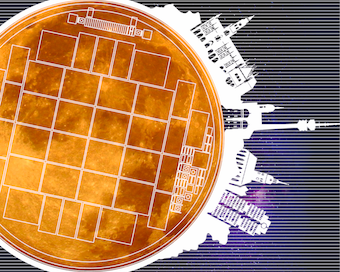Speaker
Description
Silicon detector operations at HL-LHC expected fluences will pose severe challenges in terms of tracking capabilities and radiation resistance.
TCAD tools can be therefore proficiently exploited in order to optimize detector performance in terms of charge collection, which mainly determines the detection efficiency and position resolution. To this purpose, proper combination of surface and bulk radiation damage effects modeling scheme should be adopted.
We developed a surface radiation damage effects model based on the introduction of amphoteric deep-level defects distribution, as extracted from experimental measurements. This enables a non-trivial analysis of the interplay between oxide properties, metal contact shaping (overhang) and width/pitch ratio for heavily irradiated structures. Electric field profiles near the junction corner of a strip-like detector for different pitch options, e.g. pitch=160 um and pitch=80 um for the same implant width (40 um) can be evaluated at different fluences. Actually, different electric field profiles will affect the amount of generated and collected charge.
The trend of the amount of collected charge as a function of the position of an impinging particle can be therefore extrapolated. A significant variation in the amount of the collected charge has been obtained, mainly due to different charge multiplication effects that can be experienced by different particle trajectories.
The effect of bulk radiation damage on charge collection, as well as electric field profiles, is being investigating as well, aiming at defining a set of “dominant” bulk defects which can be experimentally measured, at the same time reducing the model fitting parameters.




